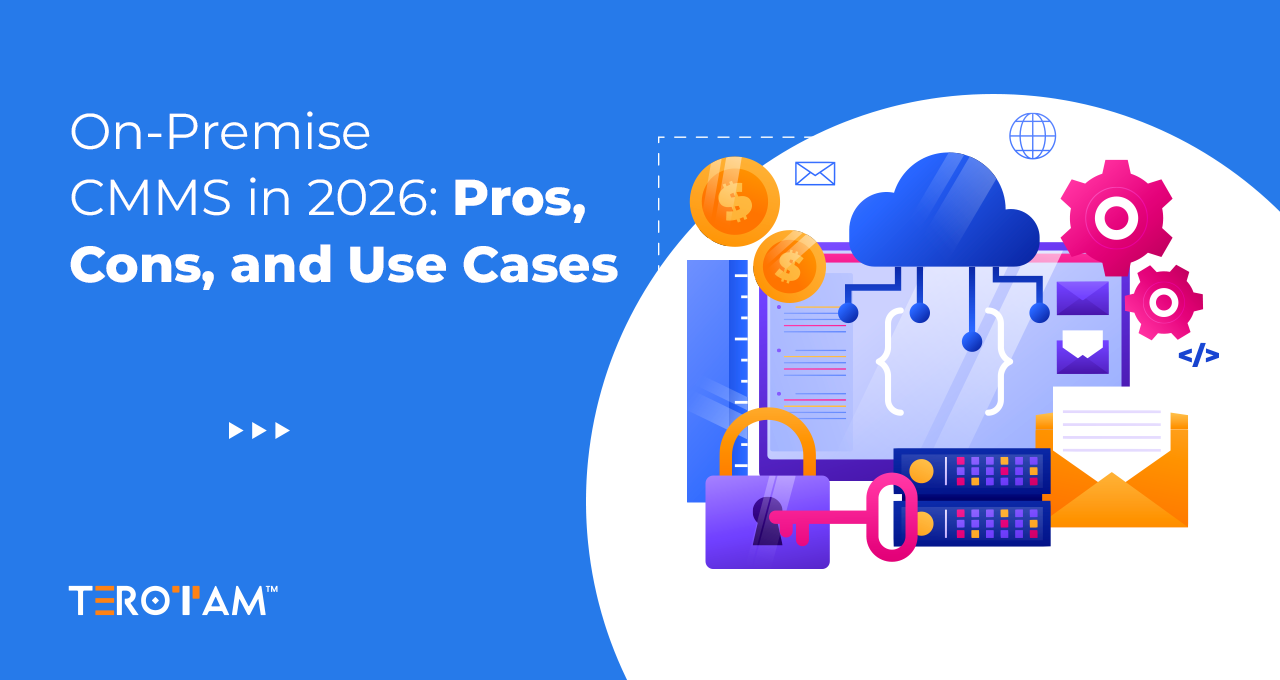What matters the most in businesses? – having streamlined regulatory compliance and audits. In order to maintain legal compliance and ensure operational excellence, these two are essential for enterprises. Sustaining elevated standards of quality, safety, and efficiency is crucial in cultivating confidence and credibility with stakeholders. The Computerized Maintenance Management System (CMMS) is an essential tool that has emerged to manage these issues.
This article explores how CMMS revolutionizes maintenance management and regulatory compliance, empowering businesses to meet regulatory requirements and also excel in rigorous audits.
Why Regulatory Compliance and Audits Are Important for Businesses?
Regulatory compliance means following the rules set by the government and industry. It helps businesses avoid fines and legal problems. For example, food companies must follow health rules to keep their products safe. If they don’t, they might face serious legal issues and damage their reputation.
Following regulations is also important for safety and quality. These rules protect workers, customers, and the environment. For instance, environmental rules help companies reduce pollution, which is good for the planet. This also makes the company look good to the public.
Compliance helps build trust with customers, partners, and investors. A business that follows the rules is seen as reliable and trustworthy. This can lead to loyal customers, better business deals, and more investments. If a company breaks the rules, it can lose this trust and harm its reputation.
Keeping up with regulations is good for a business’s finances too. Not following the rules can lead to big fines and legal costs. By following the rules, businesses can avoid these costs and run more smoothly. This saves money and helps the business grow.
All in all, regular audits and compliance checks help businesses improve. They ensure that companies are always looking at their processes and finding ways to be better. This not only helps meet regulations but also makes the business more efficient. In the long run, this leads to success and stability.
What Auditors Want to See in the Maintenance Process?
When auditors come in for a compliance check, they focus on several key aspects of the maintenance process. Auditors want to see that your maintenance process is well-documented, traceable, and compliant with standards. They look for a focus on safety, proper training, and proactive care of your equipment.
Let’s understand one by one.
Documentation:
Think auditors as financial & operational detectives. They want to see detailed records of all maintenance activities. This includes schedules, inspections, and any repairs done. Think of it as a diary for your equipment, showing everything that’s happened to it.
Traceability:
Auditors love to trace the history of maintenance actions and repairs. They want to see who did what, when, and why. It’s like having a complete timeline for each piece of equipment, showing its entire story.
Compliance with Standards:
Meeting industry standards and regulatory requirements is a must. Auditors look for proof that your maintenance practices follow the right rules. This shows that you’re playing by the book and keeping everything up to standard.
Safety Procedures:
Safety is a top priority. Auditors want to see that you have clear safety protocols and that they’re being followed during maintenance activities. This includes safety checks, use of protective gear, and emergency procedures. They want to know everyone is working safely.
Training and Certification:
Auditors check if your maintenance team is properly trained and certified. They want to see records showing that your employees have the right skills and knowledge to do their jobs well. It’s like having a badge of qualification for each worker.
Preventive & Predictive Maintenance:
Preventive and predictive maintenance are all about stopping problems before they happen. Auditors look for regular maintenance programs designed to prevent and predict equipment failures. It’s like diagnosing maintenance needs in advance and giving your equipment regular health check-ups to keep everything running smoothly.
Challenges in Managing Regulations and Compliance Audits
Managing regulations and compliance audits can be quite challenging for businesses. First off, keeping up with the constantly changing rules can feel like chasing a moving target. It’s like trying to read a book that keeps getting rewritten! Then there’s the massive amount of data you have to deal with – organizing it all is like trying to tidy up a room full of scattered papers.
Another big challenge is getting everyone in the team to follow the rules consistently. It’s like trying to get a whole cricket team to play the same shots in sync! And let’s not forget about balancing resources – you need enough people and money to handle compliance without slowing down your day-to-day operations.
Lastly, human error is always a concern, especially with manual paperwork. It’s like trying to write a perfect letter without making any mistakes – nearly impossible! So, putting everything in a single statement summarizes that managing regulations and audits takes careful planning and a good system in place to keep everything in line.
Benefits of Adopting CMMS for Regulatory Compliance and Audits
Now that we’ve seen the challenges of managing regulations and audits, let’s talk about how a CMMS system can make life easier. Think of it like having a super assistant who handles all your paperwork and keeps everything in order.
First off, a CMMS system acts like a central hub for all your maintenance data.
It’s like having a big safe where you can store and access all your important documents easily. No more searching through piles of papers – everything you need is right there.
Next, it helps with automated documentation.
This means less chance of mistakes creeping in. It’s like having a robot that writes down everything perfectly, so you don’t have to worry about human errors messing things up.
Then there’s scheduled maintenance.
It’s like having your own personal reminder that tells you when it’s time to check up on things. This helps you stay on top of regular maintenance tasks, which is crucial for meeting standards and keeping everything running smoothly.
CMMS systems also track compliance with regulations.
It’s like having a watchdog that keeps an eye on things and alerts you when something needs attention. This way, you’re always prepared for audits and inspections.
When auditors do come knocking, CMMS systems provide detailed audit trails.
It’s like having a map that shows every step you’ve taken, making audits a breeze. Plus, they generate reports and analytics that show how well you’re doing. It’s like having a report card that proves you’re doing a great job at following the rules and being efficient.
And let’s not forget about managing training and certifications.
CMMS systems track who’s trained for what, ensuring everyone is up to speed. It’s like having a manager who ensures everyone has the right skills for their job.
To sum it up,
Using a CMMS system isn’t just about following rules—it’s about excelling in a world full of regulations. CMMS gives companies the confidence they need to face audits by streamlining maintenance and maintaining standards. To find out more about CMMS for regulatory compliance and audit, get in touch with our experts right now or send us an email at contact@terotam.com








